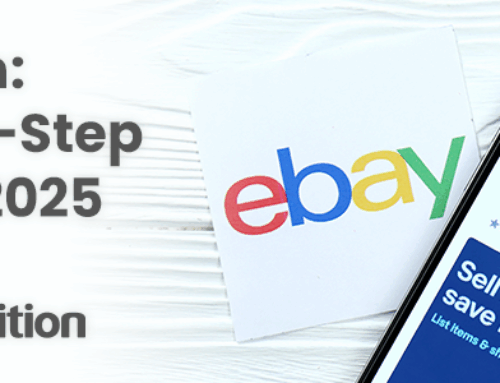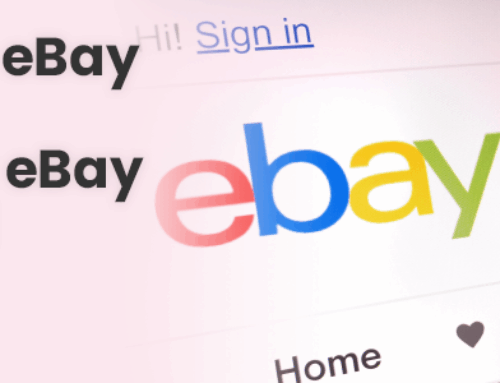
In 1995, a random shopper purchased a broken laser pointer from a fledgling online auction site and, unbeknown to him at the time, became eBay’s first-ever buyer. The story of this mystery shopper became part of the folklore behind one of the Internet’s biggest and most loved brands.
Twenty years later, Mark Fraser was identified as the legend who bid $14.83 to buy what was essentially a broken item. In a short video celebrating eBay’s 20th anniversary, Fraser revealed the reason behind his purchase. It’s a story that many eBay buyers and sellers will identify with today.
Make do and mend
At the time of the purchase, Fraser worked in a job that took him out on the road to deliver presentations for his company. He had seen other presenters use laser pointers and wanted one to improve his delivery. Unfortunately, he couldn’t afford the $100+ cost of a new device, and his boss was unwilling to buy him one. As a self-proclaimed “electronics geek,” he initially thought he could build one but just couldn’t get it to work. He was then introduced to eBay and, to his surprise, found a broken laser pointer that he believed he could fix (he didn’t).
eBay rapidly evolved from an online flea market Fraser initially discovered to become a legitimate sales venue for second-hand, pre-loved, and collectable items. It then started attracting sellers of brand new items and entered an era often referred to as the “Amazonification” of eBay.
The Amazonification of eBay
The Amazonification of eBay wasn’t just about the move from the auction format (which is still available and much cherished by many buyers and sellers). Instead, Amazonification was about the life and soul of the marketplace and what is actively sold on it.
While we believe there is room on eBay for all types of products (new, second-hand, and even handmade), the Amazonification of eBay was seen by many buyers and sellers as a misstep. They saw the Amazonification of eBay as a process that favoured more prominent brands and pushed small sellers into the weeds. In many ways, they believed eBay had lost what made the online marketplace so unique.
The problem with trying to emulate Amazon is that Amazon will always be one step ahead of you. So instead of focusing on what eBay did best, they concentrated on trying to be someone else.
eBay re-discovers itself
After many years of self-reflection, eBay finally realised that it wasn’t Amazon. In fact, the reason why many people love eBay is because it is not Amazon. The most obvious differences between eBay and Amazon include:
- Unlike Amazon, eBay is not a retailer and will never compete with its sellers.
- eBay allows online sellers to retain their own brand identity and be in complete control of their listings. This also means sellers can use their own product titles and descriptions, images, and optimisation strategies to make their listings stand out on their own merit.
- eBay sellers aren’t restricted by a product catalogue and can pretty much sell anything as long as it is legal. This includes unique products and, as in the case of the online marketplace’s very first sale to Mr. Fraser, broken and scrap items. Current “unique” items on eBay include a tennis net used in the 2014 US Open when Serena Williams defeated Caroline Wozniacki in the Women’s Singles Final and listed for sale at $3,499.
This isn’t to say that eBay didn’t benefit from its period of Amazonification. On the contrary, the online marketplace has learned a lot from the process and benefited by adding services like its fulfilment services which mirror Amazon’s FBA service. eBay also sees some success in taking the brands it recruited during this time and introducing them to a new way of doing things. Ironically, these look a lot like the old way of doing things.
The circular economy
In recent years, eBay has focused much of its efforts on the circular economy.
This move has seen collaborations with ITV2’s reality TV show Love Island, MTV’s Pimp My Ride, and significant investment in authentication services.
This isn’t just a nice thing to do or paying lip service to environmental concerns. Instead, it’s a retail service that is actively demanded by many shoppers and is particularly popular with Gen Z consumers.
The fact that eBay can guarantee the quality and authenticity of products will also be welcomed by many shoppers who, perhaps for the first time ever due to the cost of living crisis, are looking at second-hand and pre-loved items.
eBay Reskinned
eBay’s latest investment in the pre-loved market includes a partnership with Reskinned.
Reskinned works with more than 30 brands, including Finisterre, Sweaty Betty, River Island, and Joules. It takes worn items from shoppers and reconditions them for resale, repurposing, or recycling, helping to reduce the amount of clothing that goes to landfill.
Reskinned items are typically priced 40% less than new items and are fully approved by the brand owners.
Speaking to journalists, Jemma Tadd, Head of Fashion at eBay UK, said:
“Across the fashion industry we know there is a greater need to build a sustainable future. Since 1995, eBay has extended the life cycle of products, whether through consumer-to-consumer reselling or now the Imperfects hub, so it’s fantastic to partner with Reskinned, which is at the forefront of empowering the circular fashion economy.
“Pairing eBay’s reach to conscious customers, with Reskinned’s expertise in garment repair, resale, and recycling will help extend the lifecycle of products, reduce waste and showcase the variety of routes into a kinder way to shop for the shopper’s wallet and the planet.”
eBay’s renewed interest in the circular economy is also something that is being emulated by brands like Pretty Little Thing, which recently (some would argue rather cynically) launched its own pre-loved marketplace business.
Welcome to the New eBay
With its investment in the circular economy, the new eBay looks very similar to the old eBay. We believe this is a good thing for the entire eBay community. eBay has successfully differentiated itself from its competitors while making it the perfect place to list items of any age, condition, price, and quantity.
To learn more about how Frooition can help you differentiate your retail brand from your competitors on eBay, Amazon, BigCommerce, and Shopify, book a free 15-minute discovery call with one of our eCommerce design experts today.








